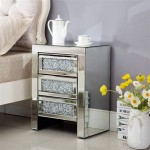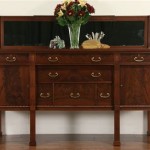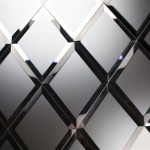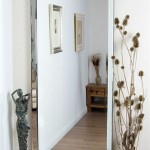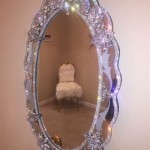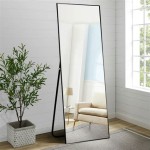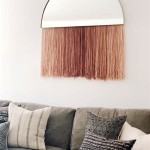How Big Should a Mirror Be Over a Vanity?
Choosing the right size mirror for a bathroom vanity is crucial for both functionality and aesthetics. A mirror that's too small can make the room feel cramped, while one that's too large can overwhelm the space. This article will explore the key factors to consider when determining the ideal mirror size for your vanity.
Vanity Width: The Primary Consideration
The width of the vanity is the most important factor in determining the appropriate mirror size. A general rule of thumb is to choose a mirror that is slightly narrower than the vanity itself. This creates a visually balanced look and prevents the mirror from appearing too dominant. A common practice is to leave a few inches of space on either side of the mirror, allowing the vanity top to frame it subtly.
Standard Measurements and Proportions
While there's no single "correct" measurement, a mirror that is 2 to 6 inches narrower than the vanity is generally considered appropriate. For example, a 36-inch vanity could accommodate a mirror ranging from 30 to 34 inches wide. This range provides flexibility depending on the overall style and proportions of the bathroom.
Visual Balance and the Impact of Double Vanities
In bathrooms with double vanities, maintaining visual balance becomes even more critical. There are two primary options for mirror placement: a single large mirror spanning the entire length of the vanity or two individual mirrors positioned above each sink. For a single large mirror, the combined width of the two vanities should be used as the baseline for calculating the mirror's width, again leaving a few inches on each side. If opting for two individual mirrors, each mirror should follow the same width guidelines as a single vanity, ensuring proportional sizing relative to each sink basin.
Height Considerations and Ceiling Height
While width is the primary focus, the height of the mirror also plays a role. The mirror should be tall enough to provide ample reflection for users of varying heights, allowing comfortable use without excessive bending or straining. Ceiling height also influences mirror selection. In bathrooms with low ceilings, a taller, narrower mirror can create an illusion of height. Conversely, in rooms with high ceilings, a wider, shorter mirror can help balance the vertical space.
Mirror Shape and Style
Beyond size, the shape and style of the mirror can influence its perceived size and impact within the bathroom. A round or oval mirror can soften the lines of a rectangular vanity, while a rectangular mirror can reinforce a more modern aesthetic. Frameless mirrors tend to make a space feel larger and more open, while framed mirrors can add a decorative touch and create a more traditional feel. The frame's width should also be considered when calculating overall mirror dimensions.
Lighting and Reflection
The placement of lighting fixtures around the mirror is crucial for both functionality and visual appeal. Wall sconces flanking the mirror provide balanced illumination for tasks such as shaving or applying makeup. Overhead lighting can supplement wall sconces, ensuring adequate overall brightness. The mirror's size and placement should allow for optimal light distribution, minimizing shadows and glare.
Practical Considerations and User Experience
Ultimately, the best mirror size is the one that best serves the needs of the users. Consider the primary functions of the bathroom and who will be using it. A larger mirror might be preferable in a family bathroom where multiple people are getting ready simultaneously. In a smaller powder room, a smaller mirror might be more appropriate. Testing different mirror sizes and placements can help determine the most practical and user-friendly option.
Budget and Material Choices
Mirror prices can vary significantly based on size, material, and style. Standard glass mirrors are typically the most affordable option, while specialty mirrors with decorative frames or etched designs can be more expensive. Setting a budget before shopping can help narrow down the choices and ensure the selected mirror aligns with overall project costs.
Installation and Placement Tips
Proper installation is essential for both safety and aesthetics. Ensure the mirror is securely mounted to the wall using appropriate hardware. The center of the mirror should typically be positioned at eye level, with the specific height adjusted based on the average height of the users. Consulting a professional installer is recommended, particularly for larger or heavier mirrors.

Bathroom Mirror Size Calculator

How Big Should A Mirror Be Over Vanity Ledmyplace

How To Choose The Best Size Mirror Olde Good Things

How To Choose The Perfect Vanity Mirror Ryan S All Glass

How To Pick And Hang The Perfect Bathroom Mirror Roomhints

How To Choose A Bathroom Mirror

How To Pick And Hang The Perfect Bathroom Mirror Roomhints

The Right Height For Your Bathroom Sinks Mirrors And More

How Big Should Your Bathroom Mirror Be

How To Choose A Bathroom Mirror

